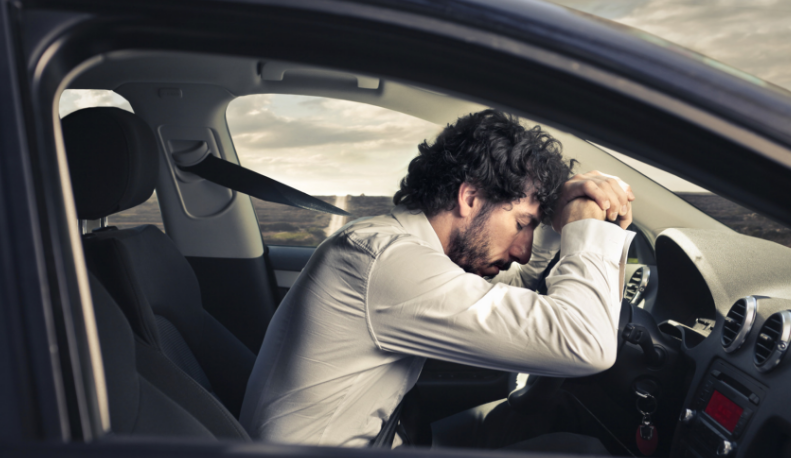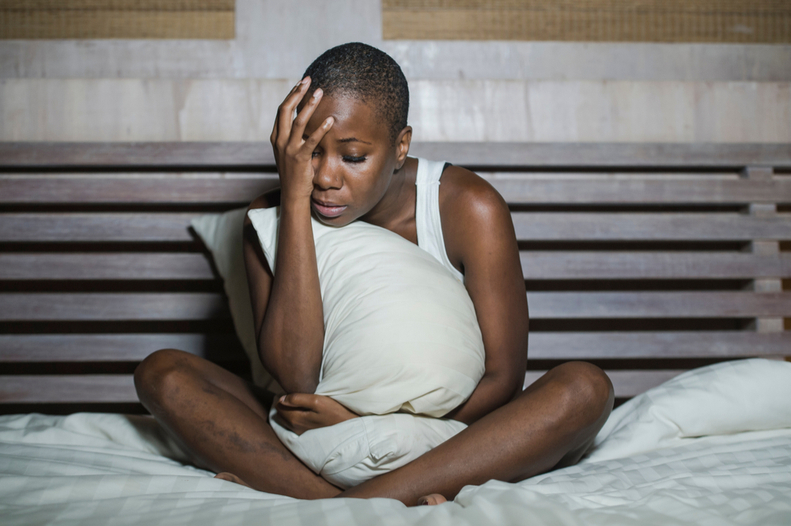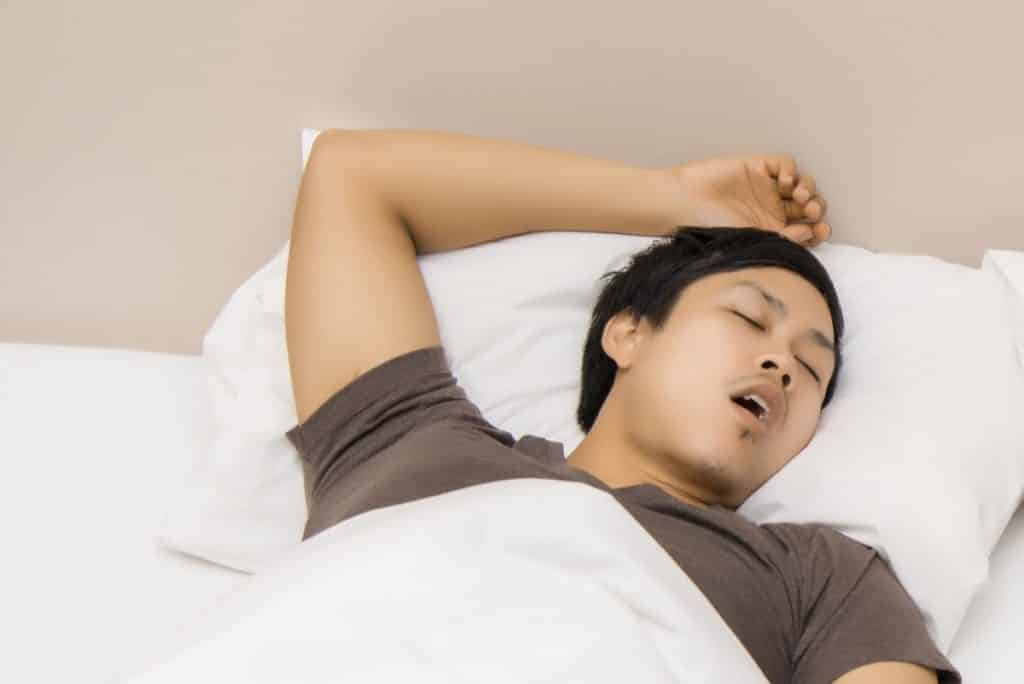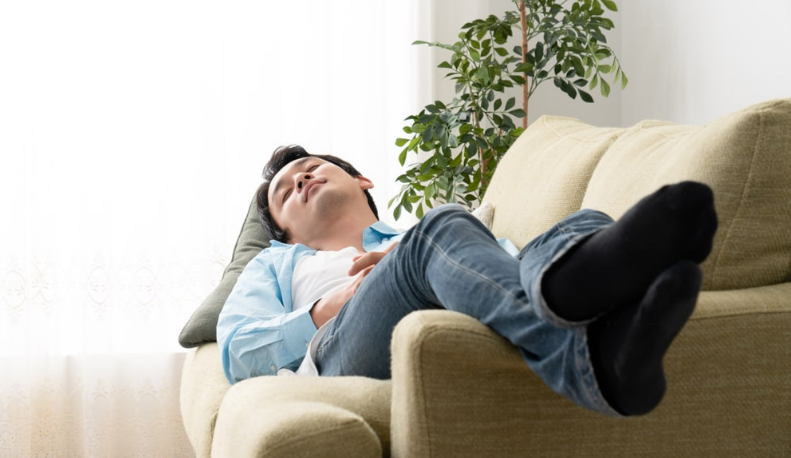Narcolepsy is a sleep disorder, and it’s not as uncommon as you might think.
There’s a lot to understand about narcolepsy, from the different types of the disorder to its symptoms and diagnosis. I consulted doctors and analyzed the latest peer-reviewed research to compile this thorough examination of narcolepsy facts and statistics.
Fast Facts
- Narcolepsy is a chronic neurological disorder that makes it difficult for the brain to regulate sleep-wake cycles.
- Narcolepsy affects about 200,000 Americans (about .06% of the population) and 3 million people worldwide.
- The condition is often underdiagnosed; only 25% of narcoleptics are diagnosed and treated. It can also be misdiagnosed as depression, insomnia, or sleep apnea.
- Some narcoleptics may fall asleep several times a day for 10-20 seconds at a time, while others may have more of a choice over timing when they fall asleep.
- Common symptoms of narcolepsy include excessive daytime sleepiness, sleep attacks, cataplexy, sleep paralysis, hallucinations, and disrupted nighttime sleep.
- Roughly 50% of narcolepsy patients develop symptoms in their teenage years.
- 66% of adults with narcolepsy have fallen asleep at the wheel and are overall up to four times as likely to experience a car collision.
What is Narcolepsy?
Dr. Chelsie Rohrscheib, sleep expert and neuroscientist, says, “Narcolepsy is one of the handful of hypersomnia disorders, which means it causes excessive sleep and chronic tiredness with poor daytime functioning,”
When you have narcolepsy, the brain doesn’t regulate sleep-wake cycles properly, which means you aren’t able to achieve sufficient deep, slow-wave sleep. Instead, Rohrscheib says, you have too much light and REM sleep.

The condition is defined as either narcolepsy type 1 or narcolepsy type 2. Type 1 was previously known as narcolepsy with cataplexy. “This type is characterized by excessive daytime sleepiness and cataplexy — sudden loss of muscle tone triggered by strong emotions,” says Rohrscheib.
Type 2, previously known as narcolepsy without cataplexy, also involves daytime sleepiness but isn’t accompanied by cataplexy episodes. It’s also the most common form of narcolepsy, accounting for roughly 80% of cases.
Prevalence of Narcolepsy
According to the American Academy of Sleep Medicine, less than one percent of men and women are affected by narcolepsy. But because the condition can take years to diagnose, it’s difficult to estimate the precise number.
Globally, narcolepsy is thought to affect 20 to 55 in 100,000 people. But exact numbers in different countries are difficult to estimate and could be much higher or much lower. According to a 2022 study, Europe has an estimated 47 people out of 100,000 with narcolepsy. In Germany, however, the estimate is lower — around 18 people per 100,000. Researchers in another study note that gaps in data relating to racial and ethnic minority groups, children, and gender are “striking,” so most studies are representative of Europeans and caucasians.
In the U.S., about 200,000 people are affected by narcolepsy. Misdiagnoses are common. Those with narcolepsy may be misdiagnosed with depression, anxiety, insomnia, or obstructive sleep disorder.

Comparatively, narcolepsy is much less common than sleep disorders like insomnia or sleep apnea. Insomnia affects about one in four adults in the U.S. Six million people have been diagnosed with sleep apnea, though estimates put the number of undiagnosed cases at 30 million. Restless legs syndrome, another sleep condition, is also more common than narcolepsy — there are over three million cases every year.
Narcolepsy by Demographic
Narcolepsy can be diagnosed at any age, but symptoms generally begin between the ages of 15 and 25. Most people aren’t diagnosed for a long time after symptoms first appear — the average time is seven years. That’s because many of the symptoms of narcolepsy are shared by other conditions. The condition affects both men and women, but males have a slightly higher risk.
Research into the prevalence of narcolepsy across race and ethnicity is limited. One study in China found that people with narcolepsy were diagnosed much younger, around age 10. They also experienced a different set of symptoms than those in France and Quebec, who were around 24 and more likely to experience the core symptoms of narcolepsy. Researchers theorize that the delay in diagnosis could be the culprit between the variability in symptoms.
Another study of 839 caucasians, 182 African Americans, 35 Asians, and 41 Latinos found that African Americans had a lower age of symptom onset and higher sleepiness scores.
If you have narcolepsy, you may have a higher risk of other conditions. Adults with narcolepsy are more likely to also be obese, and children with the condition are more likely to have attention deficit hyperactivity disorder (ADHD). Some research suggests that people with narcolepsy may also be more likely to have obstructive sleep apnea (OSA), chronic low back pain, and some psychiatric disorders.

Narcolepsy symptoms and Diagnosis
According to Rohrscheib, the most common symptoms of narcolepsy include:
- Excessive daytime sleepiness that does not resolve with additional sleep time. This is considered the most disabling symptom, and it’s usually the first to occur and affects up to 91% of people with narcolepsy.
- Poor sleep quality at night. It’s common for people with narcolepsy to wake up frequently at night. One study found that almost 61% of untreated patients and 40% of treated patients reported this symptom.
- Cataplexy. This describes a sudden loss of muscle control, which can be triggered by sudden emotions, like laughter, anger, or surprise. It only occurs with narcolepsy type 1. Cataplexy may be as mild as buckling knees, but severe episodes can involve legs giving out completely, causing a person to collapse. Cataplexy episodes are usually brief, lasting for seconds or a few minutes, with quick, complete recoveries. In about 10% of narcolepsy cases, cataplexy is the first symptom to appear.
- Frequent episodes of sleep paralysis and hypnagogic hallucinations. Sleep paralysis is the feeling of being unable to move when falling asleep or waking up. It’s estimated to affect between 25 to 70% of people with narcolepsy. Hypnagogic hallucinations are vivid experiences that happen as someone falls asleep, generally triggering feelings of dread or fear. They occur in 40 to 80% of people with narcolepsy and cataplexy. These symptoms often appear together.
- Automatic behavior. People with narcolepsy may continue to function, though not well, while they experience a sleep episode, but awaken with no memory of what happened. It generally occurs in severe cases of daytime sleepiness. Up to 40% of people with narcolepsy experience this symptom.
According to Dr. Cyrus Haghighian, a sleep medicine specialist at LA Center for Ear, Nose, Throat and Allergy, a diagnosis of narcolepsy often involves a comprehensive history of symptoms and a Multiple Sleep Latency Test (MSLT).
“It’s a daytime nap study that measures how quickly a person falls asleep as well as how quickly they enter REM sleep,” Haghighian says. A polysomnogram (PSG) is conducted as well, to reveal when REM sleep occurs and rule out the possibility of another condition, like sleep apnea.
Since many symptoms of narcolepsy are present in other conditions, it’s common to be misdiagnosed. In fact, it’s estimated that only about half of people with narcolepsy are properly diagnosed. Psychiatric and behavioral conditions are often blamed instead. According to one study, narcolepsy was misdiagnosed as depression in 34% of cases and ADHD in 14%.
Narcolepsy Treatment and Management
There is no cure for narcolepsy, but some symptoms can be treated and managed. Medications and lifestyle changes are typically warranted. It’s estimated that over 90% of people with diagnosed narcolepsy require medications to manage their symptoms. These include:
- Stimulants, like modafinil or armodafinil. These medications are designed to reduce daytime drowsiness and help people feel more alert. Side effects aren’t common, but they can include headache, nausea, or anxiety.
- Amphetamines, like Adderall, and methylphenidate. While effective, these medications can be habit forming. Side effects include nervousness and a rapid heartbeat.
- Sodium oxybate. This is used to treat both daytime sleepiness and cataplexy, says Haghighian.
For those with cataplexy, select antidepressant medications can also be helpful as off-label treatments.
Behavioral changes may also be recommended for managing symptoms. Some people may be advised to follow a schedule for regular naps to help reduce daytime sleepiness.

“It’s also recommended that people with narcolepsy practice good sleep hygiene and stress management and stick to a healthy diet,” says Rohrscheib. “Daily exercise is also recommended.”
Interesting Facts About Narcolepsy
- Narcolepsy Awareness Day is September 22.
- Famous people who have or have had narcolepsy include: Kurt Cobain, Winston Churchill, Jimmy Kimmel, Thomas Edison, and Harriet Tubman.
- Narcolepsy can affect animals too, including horses, sheep, cats, and dogs.
- Narcolepsy was first discussed in the medical field in the 1880s by Gelineau and Westphal.
- People with narcolepsy have been known to fall asleep during activities like driving, eating, talking, and sex.
- Many people with narcolepsy will never be properly diagnosed.
- Those with narcolepsy have two to four times the rate of automobile accidents than those without the condition.
Summary
Narcolepsy can be very difficult to diagnose, and it often overlaps with other medical conditions.
“If you have chronic sleepiness and poor daytime functioning, it’s important to speak with your doctor about being tested for narcolepsy and other sleep disorders like sleep apnea,” says Rohrscheib.
While narcolepsy can’t be cured, symptoms can be managed with medications and lifestyle treatments.
FAQs
What can trigger narcolepsy?
While exact causes of narcolepsy aren’t always known, Dr. Rohrscheib says triggers like infection, intense acute or chronic stress, brain injuries, inflammatory conditions, and inappropriate use of drugs and alcohol are associated with the condition.
“Scientists now believe that one of the main triggers of narcolepsy is an autoimmune response against cells in the brain that regulate sleep,” Dr. Rohrscheib says.
What does narcolepsy feel like?
People with narcolepsy experience chronic, excessive daytime sleepiness that doesn’t get better with more sleep. They also have low energy levels and fatigue, which makes it hard to focus and can affect memory.
How does narcolepsy affect your life?
When you have narcolepsy, you feel chronically tired no matter how much sleep you had the night before. That makes it difficult to attend school, function well at work, or perform physical activity. Dr. Rohrscheib adds that it’s typical for patients with narcolepsy to have difficulty maintaining relationships because they’re chronically exhausted. That’s why the condition is associated with high rates of depression.
How is narcolepsy diagnosed?
Narcolepsy is diagnosed with an in-lab sleep study. Dr. Rohrscheib says it involves going to a hospital or sleep clinic for overnight and daytime monitoring. Your family history is also evaluated, and genetic testing may be conducted to determine the presence of a faulty gene associated with the disorder.

